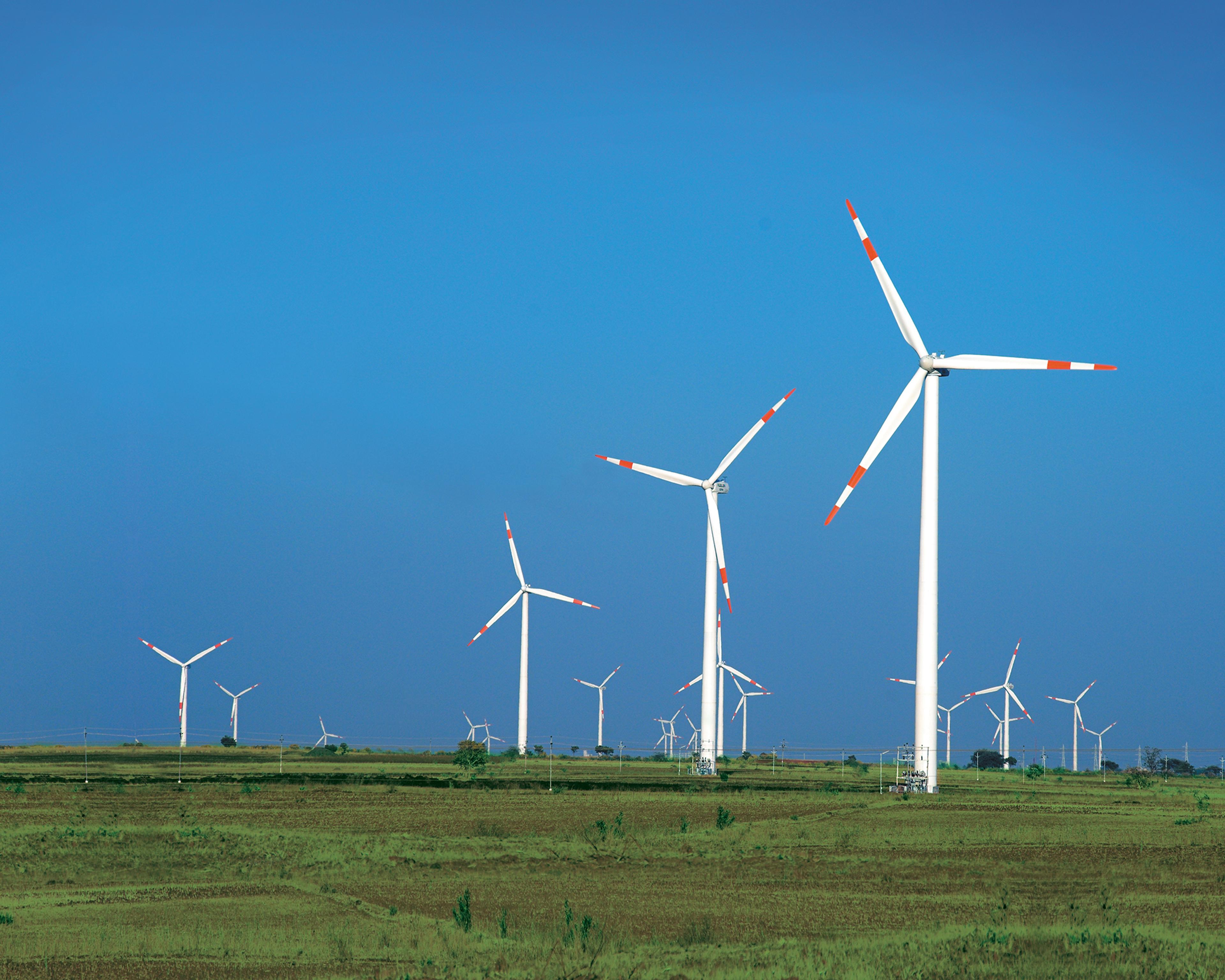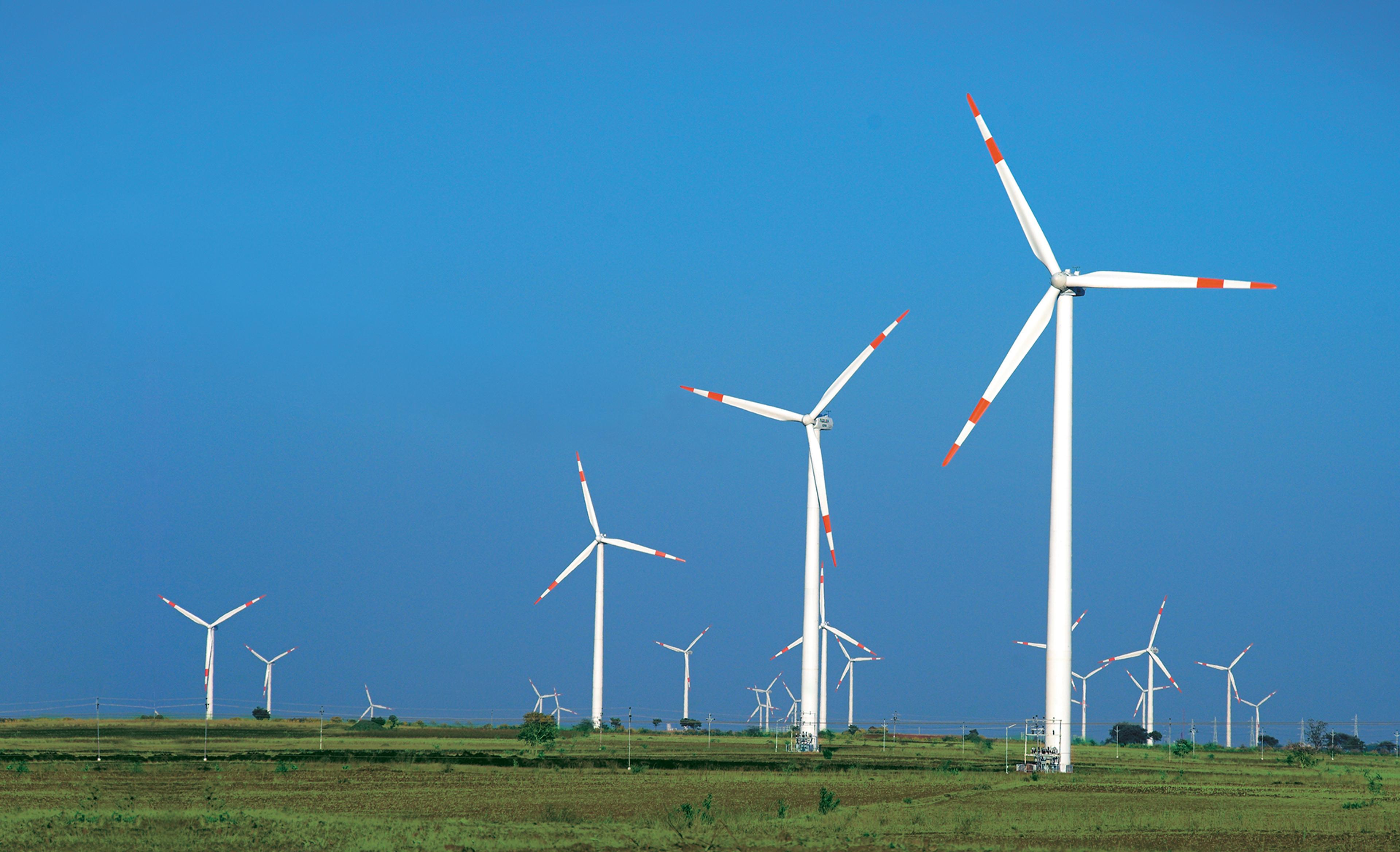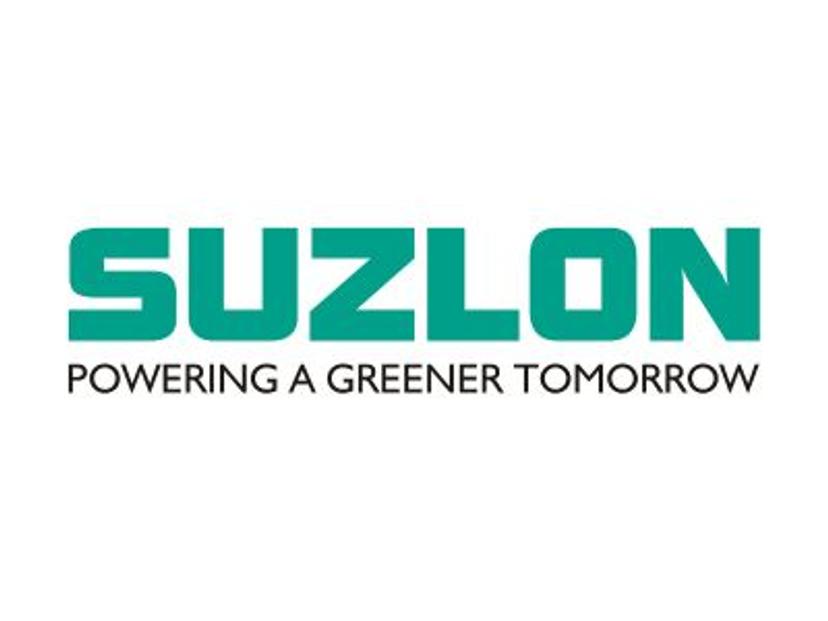Abstract
India has emerged as a frontrunner in the global sustainable energy solutions market, showcasing remarkable advancements in the renewable energy sector. The REN21 renewables 2022 global status report highlights India ranking fourth worldwide in terms of renewable energy installed capacity that includes wind power, solar power, and large hydro.
Driven by an ambitious target set at COP26 to achieve 500 GW of non fossil fuel-based energy by 2030, India has experienced a substantial 396 percent increase in its installed non-fossil fuel capacity over the past decade.

Currently, India boasts over 179 gigawatts of such capacity that accounts for 43 percent of its total energy capacity. Within the Indian renewable energy landscape, Suzlon stands out as a prominent player. With a successful track record spanning over two decades, Suzlon's turnkey solutions covern all aspects of the wind energy sector. Recently, Suzlon became the first Indian wind energy company to reach over 20 GW of worldwide wind energy installation and has a 33 percent cumulative wind energy market share in India.
With presence in 17 countries across 6 continents, Suzlon's manufacturing facilities are strategically situated in India. These facilities are further bolstered by eight research and development (R&D) centres located in Germany, India, Denmark, and the Netherlands. This case study explores Suzlon's entry into the Australia market and the impact it has made so far.
Introduction
Mr Tulsi Tanti managed a family-run textile company in Gujarat, producing polyester yarn. In the 1990s the textile companys' survival was at stake because of the rising cost of electricity. The unpredictable and expensive electric power grid led Mr Tanti to initially solve the company's energy problem by investing in two European made wind turbines. However, installing the turbines and commissioning them turned out to be a challenge, as the turbine manufacturers were not providing the turnkey solutions. Mr Tanti with no prior experience, dared to commission the two wind turbines on his own to support his textile operations.
Realising the significant gap and identifying a long-term solution to this problem, Mr Tulsi Tanti founded Suzlon Energy in 1995. Suzlon's aim was to manufacture wind turbine generators with an initial investment of $600,000. In 2001, he sold off the textile manufacturing plant to focus on Suzlon's development. He was convinced that wind energy will emerge as the energy of the future and that his company will help launch it to the market. He always said "green business is good business. But it's not about making money. It is about being responsible also". Suzlon began with a 2.34 Mega Watt (MW) wind farm project in Gujarat in 1995.
Asia's largest and the world's fifth-largest wind turbine maker now competes internationally in a capital intensive, technologically sophisticated industry, against Vestas (Denmark), General Electric Wind (U.S.), Siemens Gamesa (Spain) and Enercon (Germany).
With a workforce of 5,900 dedicated employees and an operational history of 28 years, Suzlon has delivered over 20 GW of wind energy capacity through 12,700 wind turbines across 17 countries and has recently unveiled the new 3 MW Series wind turbine technology platform, further expanding its comprehensive product line-up.
Suzlon enjoys 33 percent of India's cumulative wind energy installations. Suzlon's 20 GW wind energy installations generate enough green electricity required to power more than 13 million Indian households and has an environmental impact comparable to stopping 52 million tonnes of CO2 emissions annually.
In a technologically advanced and capital-intensive industry, Suzlon has capitalised on its extensive local knowledge and networks by offering a comprehensive, end-to-end solution.
This includes assisting in obtaining permits for wind farm sites, providing maintenance and operational support for these farms, and facilitating the sale of the generated power. The profits generated from these additional services have often exceeded those generated by the turbines alone. Suzlon's bundling strategy remains a significant competitive advantage for the company. Suzlon pioneered the 'Concept to Commissioning' model in wind energy, enabling it to meet the breadth and depth of customer requirements across the renewable energy value chain.
This was supported by its international joint ventures and acquisitions to support its technical know-how, developing in-house manufacturing of components to lower costs and strengthen supply chain. Led by Sudwind GmbH of Germany, to acquiring rotor blade manufacturer in the Netherlands, and Hansen Transmission International, all had a singular focus on growth that ensured both forward and backward integration of the global supply chain.
Suzlon's Indian operations serve as the foundation for its global endeavours. It caters to a diverse clientele, including foreign institutional investors (FlIS), consortiums, government entities, manufacturing industries, and community owners. It has developed some of Asia's largest operational onshore wind farms in nine Indian States including Gujarat, Rajasthan, Maharashtra, and Tamil Nadu.
Through its Supervisory Control and Data Acquisition (SCADA) centre in India, it has ensured continuous maintenance of wind turbines worldwide, regardless of various climates and regions. Suzlon's One Earth headquarters in Pune acts as the hub for strategic decision-making regarding international ventures.
"Currently, the company operates 14 manufacturing facilities and four R&D centres in the country. It has strategically invested in various regions of India, developing a robust infrastructure, further reinforced by its partnership with the Indian Government's Make in India initiative." - Tejjas Parmar, CEO, International Business, Suzlon Energy Australia (SEA)
Australia Strategy
Suzlon Energy Australia (SEA) entry into Australia was part of its larger globalisation strategy, where the Australian market was identified as one of the world's largest untapped wind generation markets. Wind power is Australia's leading source of clean energy, contributing to 37 .5 percent of total renewable energy supplied in the country in 2020 as well as 10 percent of electricity.
In 2004, SEA started with 2 employees in Melbourne, Victoria. The decision was timely, as the State of Victoria had launched its renewable energy policy that was attractive and investment friendly for new entrants. Victoria is also a hub for energy developers in Australia, which helped Suzlon to operate near its customers and competitors.
Suzlon's standard model of providing renewable energy solutions, was customised for the Australian market and customer needs. It has been offering full engineering, procurement, and construction (EPC) solutions with inhouse competencies, with the company emerging among top 3 providers in the Australian market. Suzlon has also significantly expanded its workforce in Australia, with now over 300 employees.
"During its prime period of construction and new installations from 2004 to 2010, SEA achieved a remarkable market share of over 30 percent. SEA has maintained an unwavering dedication to every facet of wind energy production in Australia."
The flatline organisational structure of SEA has also facilitated quick decision making and project execution, augmented further by the digitalisation of forms, reports and other critical business processes at every level of the company. SEA has invested in developing innovative solutions that not only help to ensure the highest performance levels, but also to increase the overall return on investment beyond the technical lifespan of a wind turbine generator (WTG), with a collective focus on providing sustainable operations and maintenance service (OMS) for the full lifecycle of each of its WTGs.
With an aim of generating more local employment and increased business opportunities in regional areas close to where wind farms are being serviced and maintained, SEA's clients include AGL Energy, Tilt Renewables, Pacific Hydro, Palisade to name a few.

Seeing The Future
Suzlon has combined leading-edge, home-grown technology with low-priced, precision manufacturing. Suzlon's operations contributed to jobs and growth in regional communities. Every Suzlon wind farm has been built using a workforce sourced from the local communities. This initiative has resulted in the establishment of more than 325 permanent positions and over 500 jobs in construction, spread across nine wind farms located in New South Wales, Victoria, and South Australia. The technical nature of Suzlon's business has also created the opportunity to provide skill enhancement for local employees and contractors, improving Australia's long-term skills base.
The reduction/elimination in import duties of a number of raw materials with the interim free trade agreement, Australia-India Economic Trade Agreement (AI-ECTA) will further reinforce supply chain certainty. Australia ranks 6th globally for the attractiveness of its renewable energy investment and deployment opportunities. Wind generation in Australia grew an average 15 percent per year the past decade.
"Our approach provides comfort for our customers. We do everything for our clients. We identify the sites, conduct the wind measurement studies, the budgeting, build the substations and grid connections; then we take the responsibility for twenty years of operating and maintenance. This is a real source of sustainable competitive advantage. This allows our customers to focus on their main business, while ensuring a reliable, cost-efficient source of power."
"Our strategy just worked as per planned to develop and support Australia's renewable energy transition."
Several regions in Australia are actively establishing renewable energy zones (REZ) as a strategic approach to leverage economies of scale and unlock the greatest potential for generating clean energy. These zones focus on developing the necessary infrastructure for energy storage and transportation, as well as upgrading the transmission network to seamlessly integrate with the electricity grid.
The Australian Government's initiative, known as Rewiring the Nation, allocates A$20 billion in affordable financing to modernise and expand the country's electricity grids, thereby facilitating the expansion of renewable power sources. The Central-West Orana region in New South Wales (NSW) has become the first designated REZ in Australia and is currently in the development phase, exhibiting vast potential for solar and wind projects. State governments across NSW, Queensland, Victoria, and Tasmania are actively exploring and developing additional REZs.
The Australian and Victorian governments are expediting the development of Victorian REZs and offshore wind projects. Under an agreement reached in October 2022, concessional financing of A$1.5 billion is allocated through Rewiring the Nation to support REZ projects in Victoria, including offshore wind initiatives, as well as $750 million for the completion of the Victoria-New South Wales lnterconnector (VNI West) Keranglink by 2028.
Planning Ahead
Suzlon Energy Australia's journey offers key learnings -
- To carefully assess the local government benefits available for a foreign company. Considering conservative Australian banking support for capital intensive firms, a thorough financial viability assessment is critical
- As a market operator, you are competing with multinationals hence parameters like, supply chain for renewable energy industries, available skilled work force needs to be carefully assessed for business viability
- Awareness of local compliances specifically on Quality, Health, Safety and Environment (QHSE) segments is important
- Thorough market research, understanding the consumer needs and behaviour analysis can assist businesses in registering early results
- Being aware of your distinctive offering can consolidate your market presence
- Awareness of emerging industry and supportive State policies is significant for success
- A solid context on job creation, product offering and skill upgradation can attract positive market entry response.
Suzlon is consistently striving to attain a competitive edge on a global scale by implementing various measures such as vertical integration, acquisitions, technology advancements, and the retention of skilled personnel. Over the years, Suzlon has witnessed significant growth in its business, largely attributed to its distinctive technical knowhow, innovation, strategic alliances and acquisition strategies.

